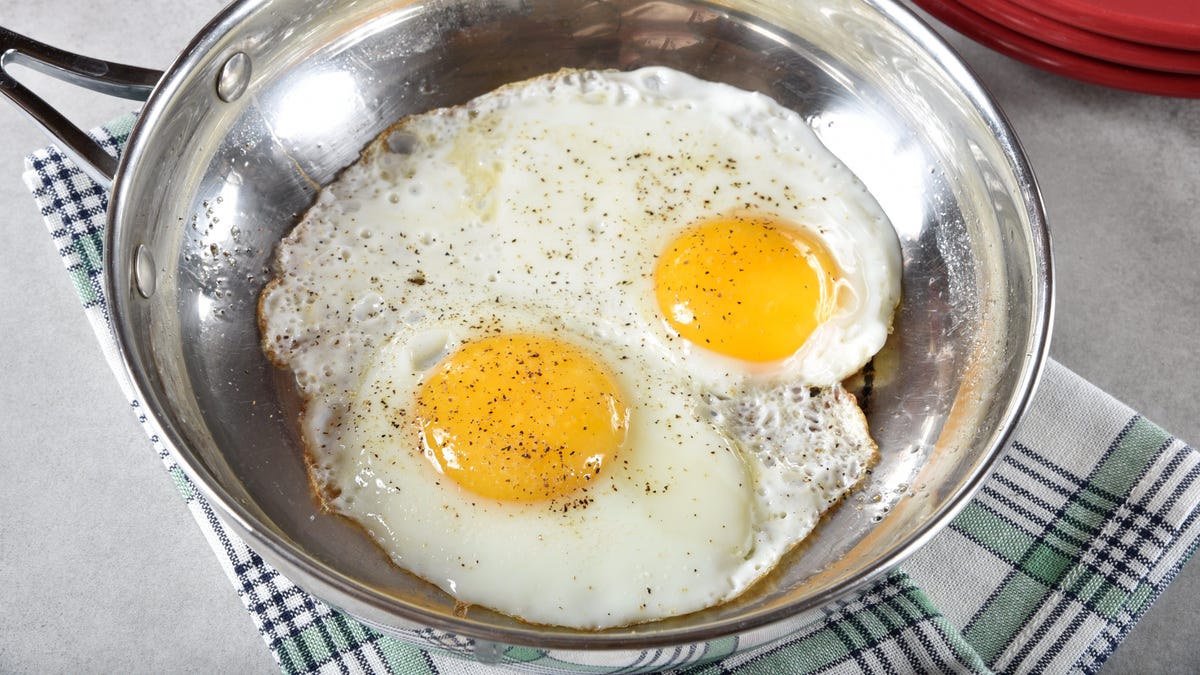You Can Fully Cook Eggs in a Stainless Steel Skillet

I’m hardly married to one type of utensil. I have stainless steel pans, cast iron pans, and non-stick pans and am starting to dabble in carbon steel. Each cookware has its own set of features, and knowing them means you can cook in any kitchen, no matter what pan you come across. Stainless steel, for example, has a nasty reputation, and most people wouldn’t even think of frying eggs in a stainless steel pan.
But you can and should: A stainless steel fried egg has the most deliciously crispy edges, and you can whip up a fluffy, cheesy omelette in seconds. The trick to cooking eggs (or searing a steak or frying fish ) in a stainless steel skillet is almost independent of the amount of fat you add. To prevent something from sticking to stainless steel, it is enough to heat it.
Why is preheating the pan so important?
Stainless steel is a porous material and these pores expand and contract as the temperature changes. When you put cold food in a hot pan, the temperature difference causes those pores to quickly shrink, trapping the food.
Further complicating the problem is the fact that proteins, including raw meat and egg whites, bond with the metal in the pan. Eggs are especially tricky because they come out of the shell as a liquid that can flow into those tiny pores, strengthening their grip on the egg.
Sounds like a sticky disaster recipe, but heating the pan to just the right temperature will create a barrier between food and those pesky pores—and we owe it all to the Leidenfrost effect.
What is the Leidenfrost effect?
The Leidenfrost effect occurs when the temperature of a given material is much higher than the boiling point of the liquid that comes into contact with that material. This allows you to dip your wet fingers into molten lead without getting burned, and, less dramatically, cook an egg in a stainless steel skillet. The high temperature of the metal vaporizes the liquid, creating a protective layer of steam between the metal and your food (or fingers) and preventing the liquid egg white from making full contact with the pan and seeping into its pores.
The easiest way to check if a pan is hot enough to cook an egg is to add a drop of water to it. If it sizzles and smokes, your pan is not hot enough and the Leidenfrost effect has not occurred. But if that drop of water turns into a little ball that rolls across the pan, you’re ready to go. However, if it breaks up into a bunch of little balls, the pan is too hot. Let it cool down and try again. (This test is often referred to as the “mercury bead test” because the water bead looks and behaves like a drop of mercury.)
You must add some fat
Once your pan has passed the mercury ball test, you can add some fat. You don’t need much. Butter works best, as the heat needed to create the Leidenfrost effect will burn the butter, but it can be fun if you like scrambled eggs with deep browned, crispy edges.
Grease provides moisture but doesn’t roll or dance, creating an even protective layer between food and pan and allowing you to whip or fry to your heart’s content without any stickiness. (Fat also conducts heat, which is great for cooking.)
Even scrambled eggs and cheese, which provides plenty of room for sticking, rises easily from a properly heated stainless steel pan. Don’t believe me? Look at the pan I fried those eggs in.
Putting it all together
In fact, you don’t need to understand the Leidenfrost effect, or any science at all, to fry an egg in a stainless steel skillet. All you have to do is the following:
- Heat a bare skillet over medium heat, adding drops of water until one of them curls up and dances around the pan as you see in the video above.
- Add a little oil, just enough to cover the bottom of the pan, and let it heat up for about five seconds.
- Add the eggs and cook as usual, remembering that they will cook fairly quickly thanks to the high heat needed to create a (virtually) non-stick surface.
That’s all. You should now feel empowered to fry eggs in the scariest egg pan ever. (And maybe dip your hand in molten lead.)